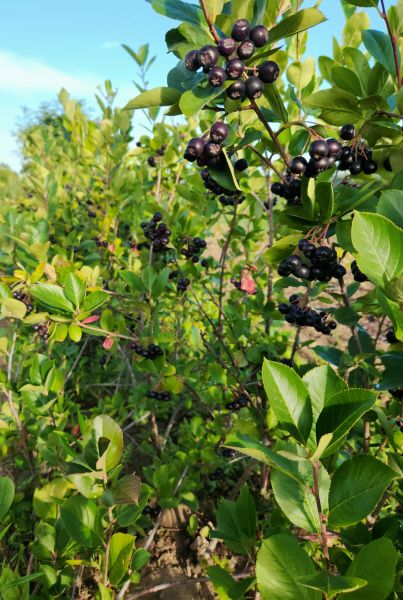GALLORJANK chokeberry
Shipping calculated at checkout
Only 5 in stock
Need more? Contact us
Main characteristics
- Hardiness
- Zone 3a, which corresponds to winter temperatures down to approximately -40°C.
- Zone 3a, which corresponds to winter temperatures down to approximately -40°C.
- Size/stature
- Approximately 1.5 to 2 m tall at maturity, with a width of around 1.5 m.
- Approximately 1.5 to 2 m tall at maturity, with a width of around 1.5 m.
- Habit & foliage
- Bushy habit, dark green foliage in summer turning red/orange in fall.
- Bushy habit, dark green foliage in summer turning red/orange in fall.
- Flowers
- White flowers, in clusters or corymbs, appearing in spring (around May-June).
- White flowers, in clusters or corymbs, appearing in spring (around May-June).
- Fruits
- Black (purple-black) berries, shiny with a waxy coating, of reasonable size (≈ 6-9 mm for some plants) depending on the source.
- Black (purple-black) berries, shiny with a waxy coating, of reasonable size (≈ 6-9 mm for some plants) depending on the source.
- Harvest
- Late August to September depending on the region. The fruits ripen fairly synchronously, which is an advantage for harvesting.
Advantages/strengths
- Abundant production: very good fruit yield according to several sources.
- Fairly easy to harvest: the fruit ripens at the same time, which makes picking easier (manual or mechanized).
- Good hardiness: tolerates cold winters, which is a plus in regions such as Quebec.
- Multiple uses: the berries are rich in antioxidants, vitamins, etc., and are used in juices, jams, health products, or processed foods.
- Ornamental value: in addition to its fruit, the plant has beautiful white flowers, green summer foliage, and spectacular fall colors.
Limitations/points to consider
- Astringent taste: like many aronia berries, the fruit is quite tart/astringent when eaten raw. It is often used in processed products (juice, compotes, etc.).
- Soil and exposure: prefers well-drained, slightly acidic to neutral soil and good sunlight to maximize berry quality and size. If the shade is too dense, there will be fewer fruits or delayed ripening.
- Fairly slow to moderate growth: this is not a fast-growing plant, so you will need a little patience before it reaches full production.


